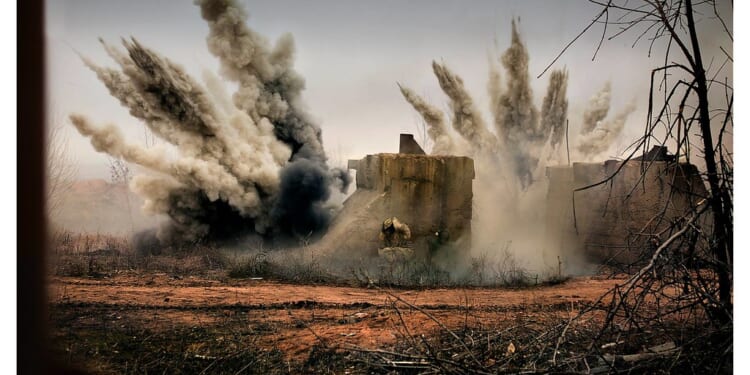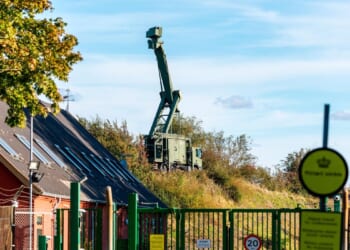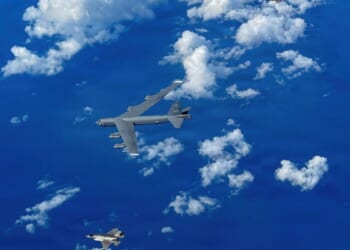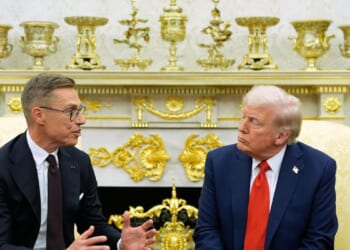Garvan Walshe is a former national and international security policy adviser to the Conservative Party. He runs Article7 – Intelligence for democrats.
Russian forces are grinding forward into the Ukrainian town — perhaps we should say former town as this place that once housed 80,000 as it has mostly now been destroyed — of Pokrovsk.
Putin’s troops have spent the best part of two years to capture the city and after huge casualties they appear to be making headway.
This is at tactical level a setback for Ukraine but its effects on operations, manpower and its prospects for wresting territory back from the Russians are less clear. Despite talk in Western capitals of peace negotiations, this is not a process Putin currently takes seriously. Ukraine has to continue to fight for its survival: what does Pokrovsk tell us about their prospects?
In Pokrovsk Ukraine has been defending the the same way it did in Bakhmut – a kind of updated positional, attritional warfare that is more or less a modified version of the Russian offensive in which men fighting in small groups battle for territory under a hail of drones. It’s bloody, exhausting and, after a year of fighting Pokrovsk’s defenders are running into the tactic’s limits.
The Russians have learned that concentrating forces ensures their swift destruction by drones, artillery and anti-tank missiles. They are instead infiltrating into the city in groups of three or four, slowly accumulating numbers and then hoping to guide drone fire against Ukrainian defenders. Though they are incurring extremely high casualties they are able, at this terrible cost, to advance. The advance is the opposite of fast (Phillips O’Brien calculated it is actually slower than a snail’s pace). Russia knows its meat-grinder grinds slow, but hopes it grinds exceedingly small.
As I write, Russia has enveloped Pokrovsk and the surrounding land on three sides, turning it into a salient, while Ukraine is seeking to dislodge them from its sides and bring relief to its men. Moscow is drawing attention to this battle so it can demonstrate some reward for its 21 months of effort, but it is a tiny part of the whole front: the salient itself is 6 miles long and 2-3 miles wide. Not quite the full-scale patch of grass Blackadder presented to Lord Melchett in Blackadder Goes Forth to demonstrate Allied gains on the Western Front, but very much an indication of the attritional nature of the ground war in Eastern Ukraine.
If there is an effect of this Ukrainian defensive effort here it is to increase the cost Russia must pay to gain territory. The cost is extraordinary — Ukraine must kill or seriously injure between 15000 and 25000 Russian soldiers every month to stabilise the front line, requiring Russia to recruit up to 300,000 people per year just to keep operations going.
This attrition on its own this is unlikely to be sufficient to force Russia to even come to the negotiating table, let alone to stop fighting, though it will frustrate Russian efforts to upgrade and reconstitute an army that has seen a lot of its mechanised equipment destroyed since 2022.
In Ukraine’s view this is not where the centre of gravity of Russia’s effort lies, which is to be found instead in the missile war. Here Russia is trying to destroy Ukrainian energy infrastructure, making it impossible to heat its cities in winter. This is not simple intimidation. Even the Russians probably understand that strategic bombing against a civilian population stimulates anger and revenge on the part of the population that is bombed, rather than demoralising them. Rather Russia hopes to force it to divert resources to evacuating the civilian population. This disruption, it hopes, will weaken Ukraine’s military effort and make them more vulnerable on the battlefield.
Ukraine’s response has been to target Russia’s main foreign currency earner: its oil and gas production infrastructure. Russia’s huge size means it can’t protect all these facilities, and Ukraine has been scoring significant hits. These are likely to increase as Ukraine’s new, cheap, cruise missile the FP-5 comes into larger scale production. Here Ukraine aims to force Russia to abandon the field because won’t be able to prosecute the war.
This exchange of missiles, not dissimilar to the “war of the cities” in the 1980s Iran-Iraq war, is happening because of a stalemate on the front. Neither side has been able to effect a decisive breakthrough in the land war, not least because neither is able to establish air superiority or deny their enemy the ability to supply their forces except at the smallest scale.
Yet it is denial of supply that matters most in medium-and long term modern warfare. No amount of troops and equipment is much use, no matter how advanced, if they can’t have ammunition, food, fuel and water delivered to them in time. Un-supplied troops are forced to surrender of withdraw.
Ukraine must therefore pursue two objectives. In the first instance to continue to attack Russia’s foreign currency earning sectors, reducing foreign earnings and decreasing the amount of fuel available for both military and civilian uses. Second, if it can accumulate enough short to medium range missiles to disrupt the supply of troops at ranges greater than those that short range drones are able to reach, it will make supplying troops more difficult and weaken the Russian advance.
Together these provide a theory of victory for Kyiv: to make the Kremlin have to choose between economic stability and supplying its forces. Until it can do so, the grim attrition of Pokrovsk will continue.


![Scott Bessent Explains The Big Picture Everyone is Missing During the Shutdown [WATCH]](https://www.right2024.com/wp-content/uploads/2025/11/Scott-Bessent-Explains-The-Big-Picture-Everyone-is-Missing-During-350x250.jpg)













